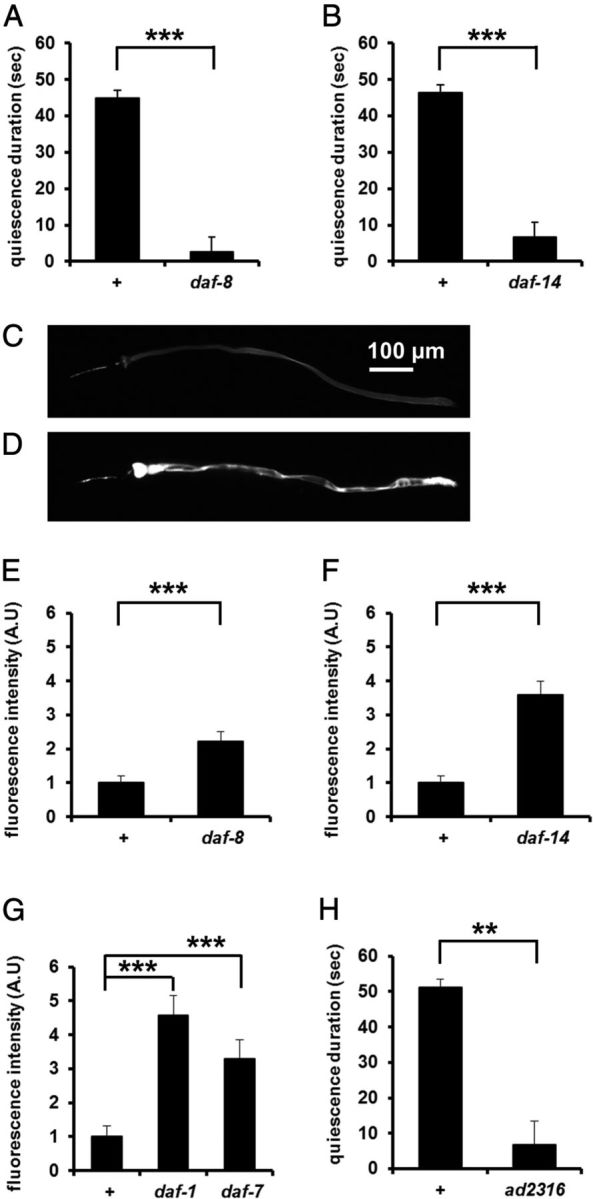Figure 3.

Canonical TGFβ signaling regulates food intake and satiety quiescence. A, daf-8 mutants had reduced satiety quiescence compared with wild-type (+). n = 10 for each group per experiment, repeated three times. ***p < 0.001, by Student's t test. B, daf-14 mutants had reduced satiety quiescence compared with wild-type (+). n = 10 for each group per experiment, repeated three times ***p < 0.001, by Student's t test. C, D, Representative pictures of a wild-type (C) and a daf-7 mutant (D) worm after refeeding with mCherry-expressing E. coli after 3 h of refeeding followed by 12 h of starvation. The daf-7 mutant had more fluorescence in the gut than wild-type, reflecting higher food intake. E–G, Canonical TGFβ pathway mutants ate more than wild-type (+) when food intake was measured by mCherry-expressing E. coli. n = 10 for each group. E, daf-8, a smad mutant; F, daf-14, a smad mutant; G, daf-7, the ligand mutant and daf-1, the type I receptor mutant. Each mutant is shown with a concurrent wild-type control. n = 10 for each group per experiment, repeated at least three times. E, F, ***p < 0.001, by Mann–Whitney U test. G, ***p < 0.001, Kruskal-Wallis ANOVA (p < 0.001) followed by Mann–Whitney U test. H, A new daf-1 mutant isolated through an unbiased screen for defects in satiety quiescence. n = 10 for each group per experiment, repeated three times.
